How To Create A Butterfly Garden
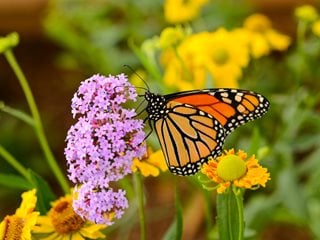
Photo by: Sean Xu / Shutterstock.
As one of nature's most endearing creatures, there is something magical about butterflies visiting the garden. Aside from the aesthetic pleasure of watching a variety of butterflies flutter from flower to flower in search of nectar, these beautiful winged insects are an integral part of the ecosystem, playing an essential role in plant pollination.
In recent years, butterfly habitat has been significantly reduced due to property development and large-scale farming, resulting in dwindling populations. Homeowners can help support these beneficial insects by creating a butterfly sanctuary in their yards. Here are some tips to help you create a successful butterfly garden.
On this page:
- 7 Steps to a Beautiful Butterfly Garden
- How to Select Butterfly-Friendly Plants
- 8 Winning Butterfly Plant Combinations
7 STEPS TO A BEAUTIFUL BUTTERFLY GARDEN
Creating a hospitable environment will entice butterflies to stay around long enough to lay eggs for a new generation. By providing the basics of shelter, water, and food—including butterfly-friendly plants—butterflies have a greater chance of thriving and reproducing.
- Make a plan. Determine which species you want to attract and are most likely to be in your area. Make a list of plants that will support those particular butterflies. Choose a suitable area of your yard and draw a rough sketch that includes the basic components that butterflies need.
- Provide food. Adult butterflies rely solely on liquid food sources. They drink through a long tubular tongue that uncoils to sip liquid. In addition to flower nectar, they also consume tree sap, pollen, fallen fruit, and animal dung. Butterfly larvae have chewing mouth parts and feed on leafy food plants such as milkweed foliage, parsley, and fennel. (Get the kids involved with this DIY butterfly feeder.)
- Create shelter. To protect butterflies, site trees and shrubs where they will provide a windbreak and a place out of the rain. These plants will also give places for butterflies to roost at night or hide from predators. Another source of shelter is a log pile, which can be hidden out of sight in a secluded corner of the yard.
- Offer water. Shallow puddles or moist sandy areas, which are preferred water sources for butterflies, also provide salts and essential minerals. Set out a birdbath or plant saucer filled with water and rocks where butterflies can perch. Place in a visible spot and change water frequently.
- Keep it sunny. Butterflies are cold-blooded insects that will be less active on colder mornings. Locate your butterfly garden in a part of your yard that receives at least 6 hours of sun each day. Make sure there's a spot where sunlight hits early in the day so butterflies can warm up quickly. Pavement, rocks, or exposed soil will absorb heat, providing additional warmth.
- Plant in drifts. Group the same plants in drifts of 3-5 so that butterflies can more easily spot the larger swaths of color.
- Go organic. Don't use chemical fertilizers or pesticides, as they can harm butterflies and other wildlife.
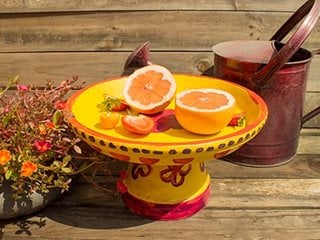
DIY butterfly feeder. Photo by: Proven Winners.
HOW TO SELECT BUTTERFLY-FRIENDLY PLANTS
Choosing plants.
While many flowers will attract butterflies, some are better sources of nutrients than others. The relationship between butterflies and beneficial plants evolved naturally over thousands of years in order to best ensure their survival. As a result, the kinds of plants that support particular butterfly species can be limited and vary by region.
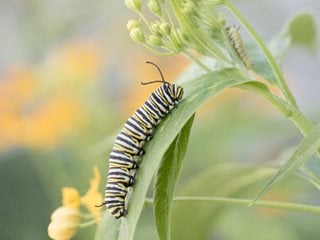
Monarch caterpillar on milkweed plant. Photo by: jan j. photography / Shutterstock.
Nectar plants vs. caterpillar host plants.
Include plants that will support butterflies throughout their life cycle. Flowering nectar plants offer food and energy for adults, while the leaves of larval plants such as parsley and milkweed nourish growing caterpillars. Plants that provide both nectar sources for butterflies and caterpillar food are especially valuable for smaller spaces.
Plant for diversity.
Choose a mix of trees, shrubs, perennials, and annuals. Create layers for butterflies to discover nectar sources at different levels. Some butterflies seek out nectar higher up, while others prefer to feed closer to the ground.
Select natives.
Include varieties that are native to your particular region. These will more likely be plants that butterflies are accustomed to feeding on. (See more on how & why to grow native plants.)
Plant for continuous bloom.
Choose flowering plants that bloom at different times throughout the growing season, especially in mid to late summer when butterflies are most active. Include fall bloomers such as aster, goldenrod, and Joe Pye weed to support migrating monarch butterflies.
Plant for color.
Butterflies are most attracted to flowers in colors of pink, red, orange, white, yellow, and purple.
For more, see 25 Butterfly Garden Plants
8 WINNING BUTTERFLY PLANT COMBINATIONS
Butterflies benefit from a diversity of plants in a range of types, sizes, and flower colors. Try these appealing combinations for a beautiful landscape that supports butterflies and other pollinators.
1. Attract Monarch Butterflies
Buy these plants from Proven Winners
This powerhouse combination attracts a wide range of butterflies, but is especially beneficial to monarchs. Milkweed leaves are the sole food source for monarch caterpillars. Butterfly bush is an abundant summertime source of nectar, while nutrient-rich asters will fuel up adult monarchs for their long migratory journey in fall.
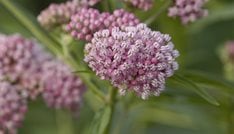 'Cinderella' Milkweed | 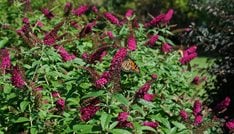 'Miss Molly' Butterfly Bush | 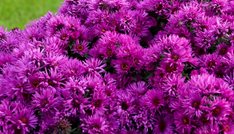 'Pink Crush' New England Aster |
2. Bring in Swallowtails
Buy these plants from Proven Winners
Especially beneficial to black and anise swallowtail butterflies, this combination includes parsley, a favorite host plant for these butterflies to lay their eggs. Other host plants include fennel, rue, and dill. Bee balm and verbena, which bloom over a long time in summer, are good nectar sources.
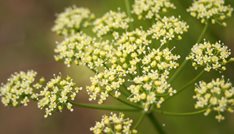 Curly Parsley | 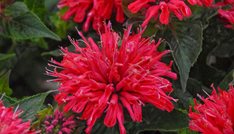 'Pardon My Cerise' Bee Balm | 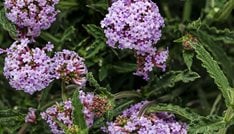 Meteor Shower® Verbena |
3. Container Companions
Buy these plants from Proven Winners
For a "thriller, filler, spiller" effect, liven up a container with this colorful easy-care trio of annuals that butterflies will love. These are all favorite nectar sources for a wide range of butterflies.
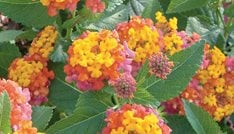 Luscious® Berry Blend® Lantana | 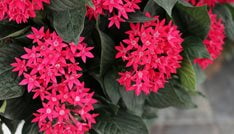 Sunstar® Red Egyptian Star Flower | 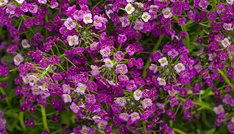 Dark Knight™ Sweet Alyssum |
4. Cool Hues
Buy these plants from Proven Winners
This subdued color combination will cool down a mixed border or bed in the heat of summer. Shasta daisy is both a host and nectar plant, while phlox and blue sage are reliable long-blooming sources of nectar.
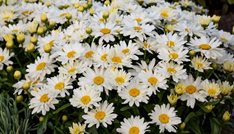 'Spoonful of Sugar' Shasta Daisy | 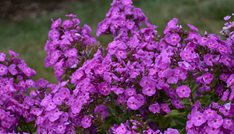 Garden Girls™ Cover Girl Garden Phlox | 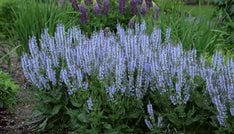 Color Spires® 'Crystal Blue' Salvia |
5. Make it Hot
Buy these plants from Proven Winners
For months of sizzling color, plant these hot colored annuals together. English marigold blooms best during cooler weather, while sunflowers and zinnias bloom during the heat of summer. All are good nectar sources.
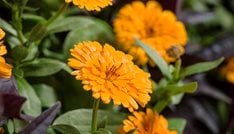 Lady Godiva® Orange English marigold | 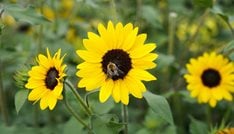 Suncredible® Yellow Sunflower | 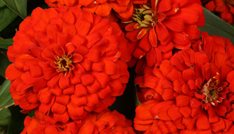 Magellan™ Scarlet Zinnia |
6. Complementary Companions
Buy these plants from Proven Winners
Plant these reliable long-blooming perennials together in a bed or border for a pop of contrast. All three are nectar-rich sources that appeal to a wide range of butterflies.
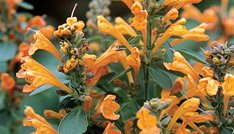 'Arizona Sandstone' Hyssop | 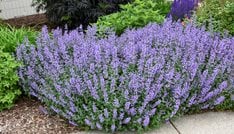 'Cat's Meow' Catmint | 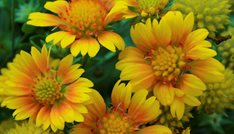 'Arizona Apricot' Blanket Flower |
7. Waterwise
Buy these plants from Proven Winners
A dry rock garden or curbside strip can become a butterfly destination with these drought-tolerant plants. Stonecrop is both a host and nectar plant, while lavender and yarrow provide nectar for adult monarchs and other butterflies.
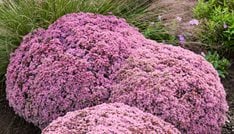 Rock 'n Round™ 'Pride and Joy' Sedum | 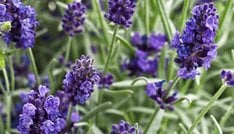 Sweet Romance® Lavender | 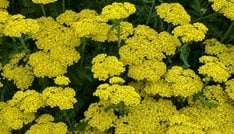 'Firefly Sunshine' Yarrow |
8. Go Native
Buy these plants from Proven Winners
Create natural appeal that will bring a variety of butterflies into your yard. These prairie natives grow wild in many regions across the U.S. False indigo is a host plant as well as an early season source of nectar, while coneflower and black-eyed Susan provide food for adult butterflies during the summer.
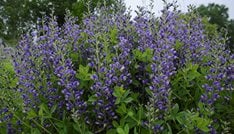 Decadence® 'Blueberry Sundae' | 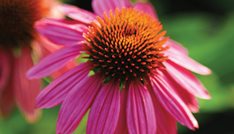 'PowWow Wild Berry' Purple Coneflower | 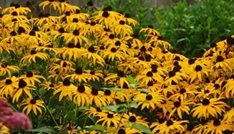 'Goldsturm' Black-Eyed Susan |
Use Proven Winners' Perfect Plant Pairings Tool to find more plant combinations that attract pollinators and are specific to your growing zone and color preferences.
How To Create A Butterfly Garden
Source: https://www.gardendesign.com/landscape-design/butterfly-garden.html
Posted by: montanomingat79.blogspot.com

0 Response to "How To Create A Butterfly Garden"
Post a Comment